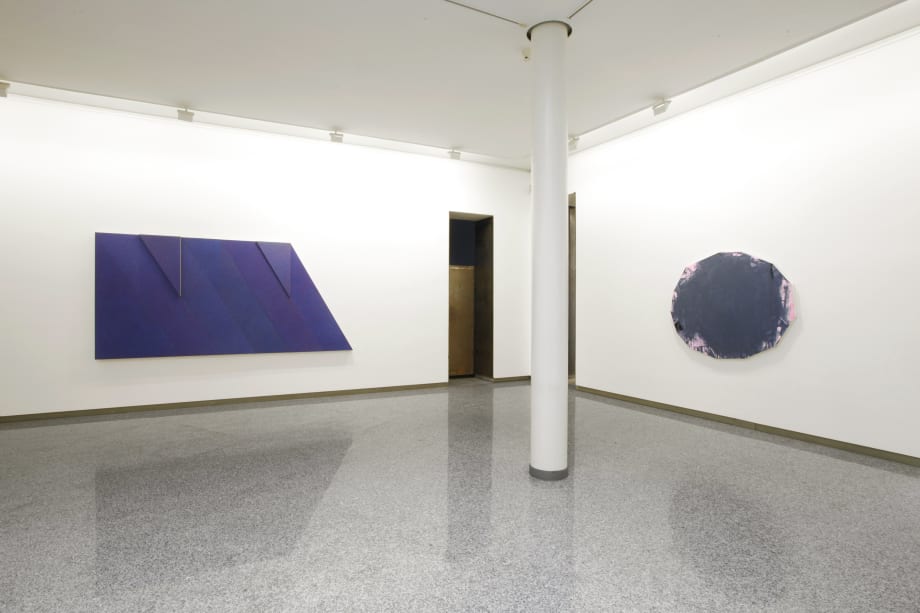The Lorenzelli Art show opens with work from the 1960s, which for Aricò represented a crucial moment in the maturation of his language. In this period the Shaped Canvases emerge; “primary forms, objects of research that are at once spatial, dimensional and chromatic (…) configurations, deliberately unstable and indefinable” (Luca Massimo Barbero) “Loud” stands out among these pieces, – without a doubt a masterwork of this period – an imposing piece consisting of the union of shaped canvases that assume the valence of archetype, and in which color is defined through a series of heterogeneous layers that give the lie to an apparent monochrome quality. In these years he participated in the Venice Biennial (1968), where he was given a personal exhibition space. For this occasion Aricò created three large site specific pieces, two of which, Strutture assonometriche (Per Danny n. 1) and Strutture, were shown to the public in a context that partially recreated the Venetian ambiance, where they represented the triumph of painting as complex space, absolutely annulled by the closed geometric structure and by the definite surface that hosted them.
Aricò's quest was for work that matures in an ambiance of international dialogue of expressive reduction and that constituted, as Luca Massimo Barbero states: “an exquisitely European reflection on the coordinates of representation and the construction of space”. In the following years his analysis will concentrate the diverse structural and expressive modulations tied to primary forms, dedicating himself to a kind to a kind of investigation that is not only spatial, but also dimensional and chromatic, and that explicates itself by way of instable and undefined configurations that emerge in Prospettiva per Paolo Uccello (1970), a reinterpretation of his humanistic vision of the history of art and architectural archetypes. Just two years later he will paint Blues (1972), an extremely significant piece of work that opens the road to the later pictorial experiences of the 1970s, of which Cat De A 4 Mentale A (1973) is an example.
The following decade represents a fundamental juncture for Aricò, a period which leads him to an increasingly lyric dimension. The canvases of this period are structured in a less geometrically defined fashion and are a prelude to the progression of the 1990s in which the cognition of vital tension accentuates the necessity in him to transcribe the totality of the absolute in relationship to an increasingly physical and corporal space. The variations of the shaped canvases correspond to diverse applications of the color; multiple, irregular and much more intense, as can be seen in the large canvases such as Fuori posto buio (1990), Poligono scuro (1993) and Dentro il Blu (1993), that close the exhibition. In these dramatic paintings the tonal modulations are scratched and crossed by irregular and broken lines and the sensation that the color is meant to hide something while clearly showing itself is evident, as if these pieces were precariously suspended in the tragic description of man.
Rodolfo Aricò: An Untimidated Gaze
Past exhibition

